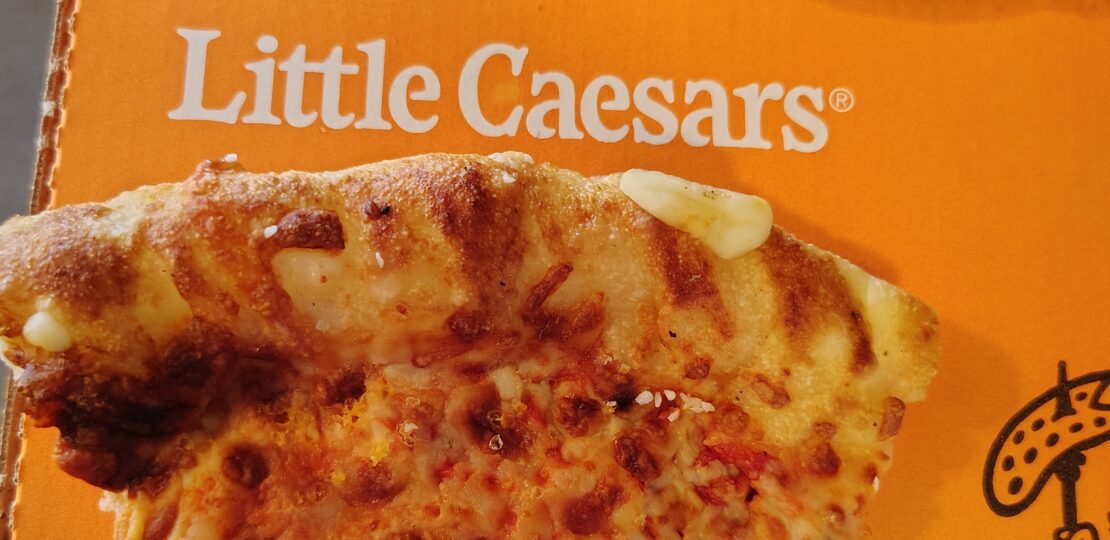Little Caesars Stuffed Pretzel Crust Is a Total Letdown
July 4, 2025 | by Renegade

If you’re tired of corporations selling you subpar products through misleading or outright false advertising — or charging more and more for less and less — then you’ve come to the right place. Last time, we called out Dawn Dish Detergent for falsely claiming to be environmentally friendly. (Read more here: The Real Reason Dawn Dish Detergent is a Big Ads Lie) Spoiler alert: they’re not. This time, we’re going after Little Caesars new product, the Stuffed Pretzel Crust Pizza. And yes — this one is personal.

The picture on the left shows what Little Caesars advertises. The picture on the right is what I actually received. The real product isn’t even close to what was promised — no surprise there. And I’m not just calling out Little Caesars. This is a broader problem with fast food advertising, where the actual product rarely resembles the glossy promo photos.
But in this case, the deception goes further because is the advertised crust even pretzel?
Look, I know that pizza dough and pretzel dough share similar ingredients and are similar in taste, but pretzel dough is generally defined by three distinct characteristics:
- Preparation method: Authentic pretzel dough is briefly boiled in water mixed with baking soda or lye before baking. This process gives pretzels their signature flavor, chewy texture, and dark brown exterior.
- Color: The result of that boiling process in baking soda or lye water is a deep, brown hue which is unique to pretzels and very different from typical pizza crust.
- Texture: Real soft pretzels are denser, with a chewy interior and a slightly crunchy exterior. Pizza crust is typically less dense and less crunchy on the exterior. However, the texture can vary depending on the type of crust, whether regular, deep dish or thin crust, et cetera.
Applying these characteristics to Little Caesars’ “Stuffed Pretzel Crust,” I can confidently say: no, this is not a pretzel crust.
This crust fails to meet all the key characteristics required for something to be called a pretzel. First, I seriously doubt that Little Caesars modified their standard pizza dough at all. It seems like they’re using the same regular crust they’ve always used for every pizza—“pretzel crust” or not.
Second, while I can’t speak definitively about how it’s made—I’ve never worked at Little Caesars—logically, I find it highly unlikely their staff are boiling dough in a baking soda or lye bath. Traditionally, soft pretzels are boiled after shaping and before baking. That process doesn’t make sense in a fast-food pizza setting. It’s hard to imagine Little Caesars employees boiling crust before assembling and baking the pizza. It’s just not practical.
And based on the pizza I received, the dough clearly wasn’t boiled.
More realistically, they’re brushing a baking soda and water mixture around the edge of the crust before baking. That brushing would need to be thorough—something that clearly wasn’t done properly here. But even if it had been, would that make it a pretzel? That’s debatable for some. In my opinion, though? No. It’s not a pretzel.
It also fails the second test: color. The crust I got was pale and bland, nothing like the rich brown seen in the advertisements.
Lastly, the texture was indistinguishable from ordinary pizza crust. It wasn’t dense, it wasn’t chewy, and it had no crisp bite.
So if this isn’t a pretzel crust, then what is it? From my experience, it’s just regular pizza dough topped with way too much salt that Little Ceasars tried to pass off as pretzel. That’s it.
As for the rest of the pizza: the taste was… meh. The bottom crust was very thin — not necessarily a bad thing, but definitely a matter of personal preference. They also advertise a mix of cheese sauce and pizza sauce, but mine had so little sauce on it that I couldn’t tell what was what. If it was a mix, it didn’t make any noticeable impact.
But the worst part by far was the excessive salt. The crust had a thick layer of it, and during transport, much of that salt ended up scattered across the entire pizza. Every bite tasted overwhelmingly like salt — even after trying to wipe it off. The end result was borderline inedible.
The only saving grace? The price. At around $12, it’s relatively cheap for a full pizza these days. So if you decide to try it, at least you’re not throwing away a fortune.
Overall: avoid this pizza. It’s falsely advertised, poorly executed, and the extreme saltiness ruins what little flavor it has. There is no actual pretzel crust — just a salty letdown.
RELATED POSTS
View all




